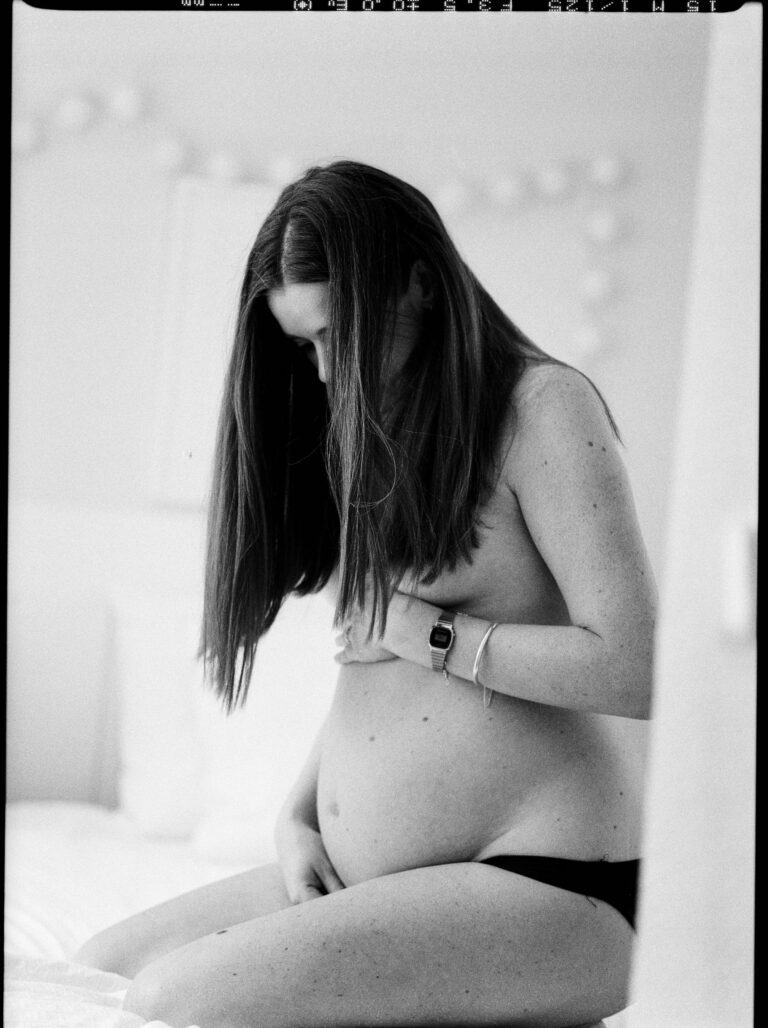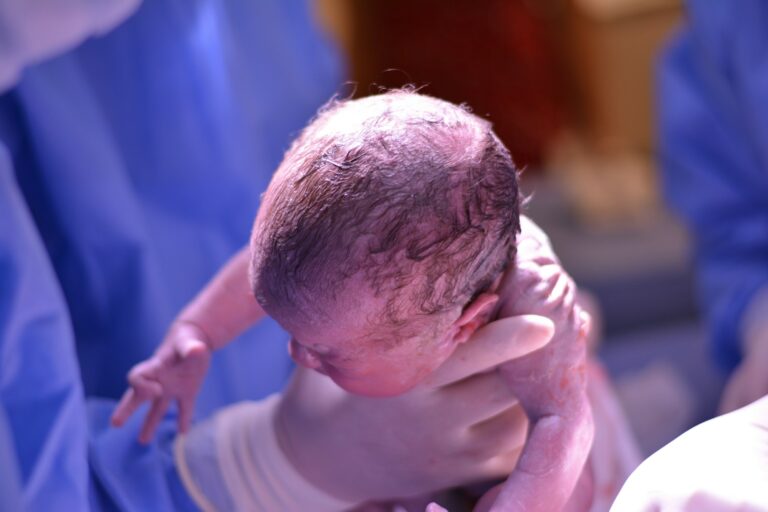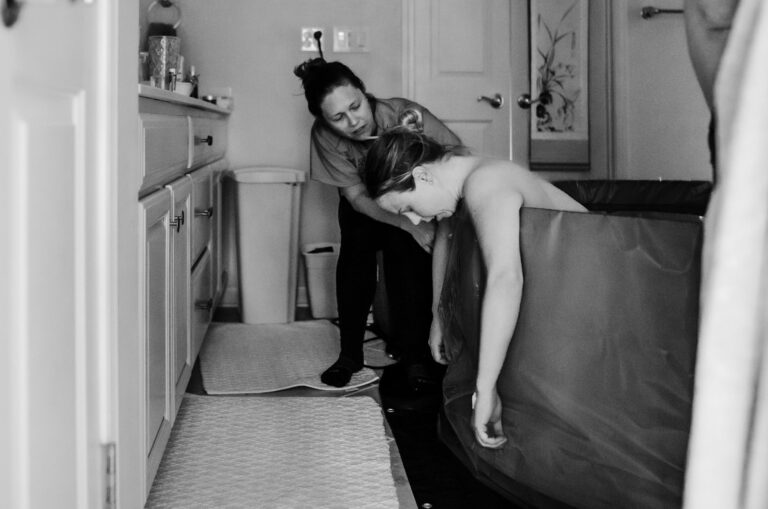You want to know if your shape is normal, if your bump should be bigger by now, or why it seems to change size by evening. You also want straightforward signals for when to call your clinician. Pregnancy belly growth is not a straight line, it is a living curve that reflects your body, your baby, and the way the uterus rises. You will see what is typical, what is just day to day fluctuation, and what truly needs a check. Expect clarity, practical steps, and a steady focus on your comfort and safety.
Why every belly looks different
No two bumps evolve in the same way, and that is expected. A first pregnancy often shows later, a subsequent pregnancy may project sooner, because tissues have stretched before. Torso length changes the silhouette, a short torso tends to look higher, a long torso tends to look lower. Core tone can delay outward rounding, while a more relaxed abdominal wall can let the uterus present earlier. Placenta position, amniotic fluid volume, and baby position all remodel the external contour. You may notice a softer or fuller look if the placenta sits in front, and shifting shape if the baby moves from breech to head down. Pregnancy belly growth reflects all of these moving parts.
The physiology of growth, uterus, fundus, skin
Think of the gravid uterus as a strong muscle that expands steadily. Early on, it fits in the pelvis, then around 10 to 12 weeks it rises above the pubic bone. The upper portion, the fundus of the uterus, becomes a useful landmark that clinicians can feel and measure. By 18 to 20 weeks, it often reaches the navel. From about 20 to 36 weeks, a tape measure from the pubic bone to the top can increase about 1 centimeter per week, although position, build, and fluid cause variation. Skin stretches in response, the midline may darken, and stretch marks may appear then fade after birth. The belly button may flatten or pop out, which is typically benign if not painful.
When pregnancy belly growth becomes visible
You might see almost nothing early on, then one day it seems to appear. First pregnancies commonly show around 16 to 20 weeks, later or earlier is still within a normal arc. Subsequent pregnancies may show by 12 to 16 weeks. Daily factors blur the picture. Bloating, constipation, and evening fluid shifts make the silhouette look larger, which is not the same as true uterine growth. Ask yourself, does it change with the time of day, or with a bowel movement, or is it a steady week to week rise, that is the difference.
Trimester snapshots
First trimester, weeks 1 to 13
The uterus grows but mostly stays within the pelvis. What you see outside is often digestion driven, progesterone slows gut movement, so gas and bloat are frequent guests. By the end of this trimester, you or your clinician may feel the uterus above the pubic bone. Severe pain or heavy bleeding are not on the normal list, seek urgent evaluation if these occur.
Second trimester, weeks 14 to 27
The classic pop. The uterus ascends into the abdomen, and by 18 to 20 weeks the top often reaches the navel. Movements start as flutters, known as quickening, and later become visible ripples on the surface. Round ligament discomfort and a dark line down the center can appear. Fundal measurement becomes clinically useful now.
Third trimester, weeks 28 to 40 plus
Abdominal size reaches its peak. Many notice fast change up to about 32 to 36 weeks, then a plateau as the baby matures without dramatic external increase. Near term, the baby may lower into the pelvis, breathing can feel easier and pelvic pressure increases. Pregnancy belly growth can look slower now, even as the baby still grows.
Week by week highlights
- 10 to 12 weeks, uterus rises out of the pelvis, appearance often unchanged
- 16 weeks, common time for a visible baby bump in a subsequent pregnancy
- 18 to 20 weeks, top of the uterus near the navel, a more consistent curve appears
- 24 to 28 weeks, growth feels faster and clinic checks include tape measurements
- 32 to 36 weeks, shape shifts as the baby changes position, external growth often slows
- 37 to 40 plus, the bump may drop as engagement occurs, pressure moves lower
Fundal height and clinical tracking
Pregnancy belly growth is monitored with simple tools that carry a lot of value. Clinicians use fundal height as a screening measure, the distance from the pubic bone to the top of the uterus, recorded in centimeters. From about 20 to 36 weeks, the number often mirrors gestational age within a margin of two to three centimeters, for example 24 cm near 24 weeks, 32 cm near 32 weeks. Techniques vary, bladder empty, tape centered, you lying on your back with a slight tilt. If tape numbers diverge or trend oddly, imaging steps in.
Ultrasound offers detail. Head width measured as biparietal diameter, early length as crown rump length, overall size as estimated fetal weight, and a suite of measures called fetal biometry help clarify growth. Consistent evidence comes from serial ultrasound assessments, not one image alone. ACOG, the NHS, Mayo Clinic, and Cleveland Clinic all describe this approach to screening and follow up for growth concerns.
What shapes the look of the bump
- Maternal build, height, torso length, pelvic shape, and abdominal wall tension guide the silhouette
- Prior births can lead to earlier outward change due to tissue adaptation
- Scars and abdominal surgery can alter contour and comfort
- Baby factors, presentation, placenta location, and fluid volume remodel the curve
- Twins or more increase measurement ahead of singletons, an expected shift in a multiple pregnancy
- Daily shifts, meals, sodium, hydration, bowel patterns, and posture change the visible outline
Home tracking, photos, and safe measurements
You can measure safely with a soft tape. Measure from the top of the pubic bone to the top of the uterus, at the same time of day, without pressing hard. Some parents like a secondary yardstick, the waistline at the navel, as long as you use the same landmark each time. A weekly photo with the same clothing, light, and distance can be surprisingly reassuring. Label it with week and date, then put it somewhere private.
Call your team if you see a sudden jump or drop that does not ease the next day, especially if paired with fewer movements, new severe pain, or bleeding. Pregnancy belly growth should trend upward over weeks, not seesaw dramatically.
Myths versus meaningful signals
Belly height or shape does not predict baby sex or exact size. That old tale does not hold up against imaging and measurement. What does matter is trend. A small, persistent tape number can point to fetal growth restriction, a large or unusually tense abdomen can point to polyhydramnios, and a very compact measurement can point to oligohydramnios. Ultrasound clarifies which factor is at play.
Health conditions that change pregnancy belly growth
- Gestational diabetes mellitus can increase baby size and fat stores, a pattern called macrosomia
- High blood pressure disorders can impact placental function and growth, with symptoms like swelling, headache, or visual changes that need assessment
- Low or high amniotic fluid changes belly tension and size
- Structural factors such as uterine fibroids can change contour and measurements
If a measurement concerns your clinician, expect a repeat tape and an ultrasound. Imaging may include Doppler ultrasound to see blood flow, amniotic fluid index to quantify fluid, a non stress test or biophysical profile if needed, and review of timing and ultrasound dating alongside ongoing fetal surveillance.
Discomforts and practical relief
Round ligament tugs, lower back strain, pelvic pressure, itchy skin, rib pressure, these are common companions of pregnancy belly growth. What helps
- Supportive clothing that lifts without squeezing breathing or circulation
- Short sessions with a maternity belt, then reassess comfort
- Side lying sleep, often left side, with pillows under belly and between knees
- Warm showers or baths, gentle stretching, frequent posture resets
- Lifting with knees bent and the load close, ask for help with heavier items
Seek urgent care for severe or persistent pain, regular painful tightenings, bleeding, abnormal fluid, severe headache, or sudden swelling. Decreased movements deserve attention at any time.
Movement, exercise, and pelvic floor care
Stay active with intention. First trimester, continue your routine if you feel well, emphasize breath and gentle core activation. Second trimester, moderate intensity and avoid long periods flat on your back, walking and swimming work well. Third trimester, lean into comfort and stability, short walks, prenatal yoga, and water exercise. For core work, use pelvic tilts and gentle activation rather than intense sit ups. If you see doming along the center or feel a wide gap, pause and ask for guidance.
Be alert for Braxton Hicks contractions during activity. They often settle with hydration and rest. Stop and call your clinician for bleeding, chest pain, dizziness, or sudden fluid loss.
Nutrition, digestion, and bloat management
Small, frequent meals can ease reflux as the stomach is nudged upward. Fiber intake, steady hydration, and routine mealtimes support bowel habits. Sodium balance matters for daily bloating. A rapid, persistent change in abdominal size or swelling deserves evaluation, since pregnancy belly growth should not leap in a day without explanation.
When growth seems too small or too big
You may wonder, is the bump small for dates, or have we outpaced the calendar. A single look rarely answers that. Trend is king. If the tape lags repeatedly, expect closer measurement, an ultrasound for size and fluid, and sometimes Doppler vessel studies. If the abdomen increases rapidly with discomfort, your team may look for high fluid or other causes. Many times, the answer is a simple one, baby position or placenta location, but checking brings clarity and calm.
Special scenarios and tailored notes
Plus size or athletic builds can make surface checks less precise, so clinicians rely more on pattern over time and imaging. Petite frames can project a high bump earlier because the space is compact. After abdominal surgery, scars can shift the contour or create pressure points. Conception through IVF and older maternal age often come with a more detailed monitoring plan, and twins or higher order pregnancies naturally run ahead on tape measurements.
Late pregnancy changes and signs of labor
As the head settles lower, often after week 37, you may feel easier breathing and more pelvic heft. Posture adjusts, walking may feel different, and bathroom trips pick up pace. Belly size can look lower or wider. None of this tells you exactly when labor starts. Contraction patterns, membrane rupture, and cervical changes carry more weight for timing.
Postpartum, what the belly does after birth
The uterus begins to shrink immediately, and the most noticeable change arrives in the first two to three days. By around two weeks, the uterus is usually not felt on exam, and by about six weeks it nears its before pregnancy size. Afterpains are normal as the muscle tightens. Vaginal bleeding progresses through expected phases called lochia. If bleeding smells foul, pain escalates, or fever appears, seek care. Watch for diastasis recti, a midline separation, a gap greater than about two centimeters or a bulge on effort can benefit from guided rehab. Early on, a soft binder can soothe but do not let it replace a gentle rebuild of core and pelvic floor.
Documenting your bump and privacy
If photos bring you joy, make a simple routine, same backdrop, same pose, once a week. Label with week and date. Consider a private album or a printed book as a keepsake. If you share images, reflect on what feels comfortable for you and your family.
Body image, comments, and social pressure
People comment, sometimes with charm, sometimes without a filter. You can reset the conversation, I feel well and my clinician is happy with growth, or I prefer to focus on how the baby is doing. Practical self care helps, rest when you can, eat to feel steady, choose clothing that feels good on your skin, and keep your support circle close.
Key takeaways
- Pregnancy belly growth varies widely, timing, shape, and speed are influenced by anatomy, prior pregnancies, placenta location, fluid, and baby position
- From about 20 weeks, a tape measure offers a simple screening, symphysis fundal height usually follows weeks with a small margin
- Ultrasound adds precision, with abdominal circumference, biparietal diameter, crown rump length, estimated fetal weight, and fetal biometry collected through serial ultrasound assessments
- Signs that need attention include a belly that stops increasing after mid pregnancy, very rapid enlargement with discomfort or breathlessness, severe pain, contractions, bleeding, sudden swelling, severe headache, visual change, or fewer movements
- Comfort strategies work, supportive garments, posture shifts, pillows, gentle exercise, and pelvic floor care
- After birth, steady uterine shrinkage is expected, watch for symptoms that suggest infection or heavy bleeding, and rebuild core and pelvic floor with guidance
- For reliable information on pregnancy belly growth, measurement, and growth monitoring, ACOG, the NHS, Mayo Clinic, and Cleveland Clinic provide consistent recommendations
- You can get tailored advice and free health questionnaires for children with the application Heloa
Pregnancy belly growth is a journey that blends anatomy, physiology, and daily life. If questions linger, talk with your clinician, lean on measured trends, and use imaging when needed. As your pregnant belly changes, remember there is a growing uterus during pregnancy doing exactly what it is meant to do.
Questions Parents Ask
How can I tell the difference between a pregnancy bump and general weight gain?
It’s a very common worry, and you’re not alone. A pregnancy bump usually sits lower and feels firmer because it’s the uterus rising above the pubic bone. Weight gain is more diffuse—spread across hips, thighs, and belly—and feels softer. Bloating and gas can mimic a bump but often change with meals, bowel movements, or time of day. Practical checks that help: a weekly photo in the same pose, a simple fundal measurement with a soft tape (from pubic bone to fundus), and noting whether the shape changes across a day. If you remain unsure or notice a steady lag in growth or a fast unexplained increase, mention it to your clinician for reassurance or further checks.
When does the stomach start to feel hard, and when should I be concerned?
A firm or tight feeling can begin in the second trimester and become more common later on. Brief firmness is often normal: it can follow activity, dehydration, or be a Braxton Hicks contraction (usually short, irregular, and not very painful). The uterus itself also becomes firmer as it grows. Seek advice if the hard feeling is constant, gets worse, is very painful, comes with bleeding, fever, or a drop in baby movements. In those cases, contacting your care team helps determine if further assessment is needed.
Why does my bump sit higher or lower than other people’s?
This variation is normal and stems from anatomy and how the pregnancy sits in your body. A short torso often makes the bump look higher, while a long torso can show a lower belly. Previous pregnancies, abdominal muscle tone, placenta location, amniotic fluid, and baby position (head down vs breech) also change how the bump presents. These differences rarely mean anything is wrong. If the height of the bump is paired with measurements that consistently fall off expected trends, your clinician may use ultrasound or serial checks to clarify growth.










